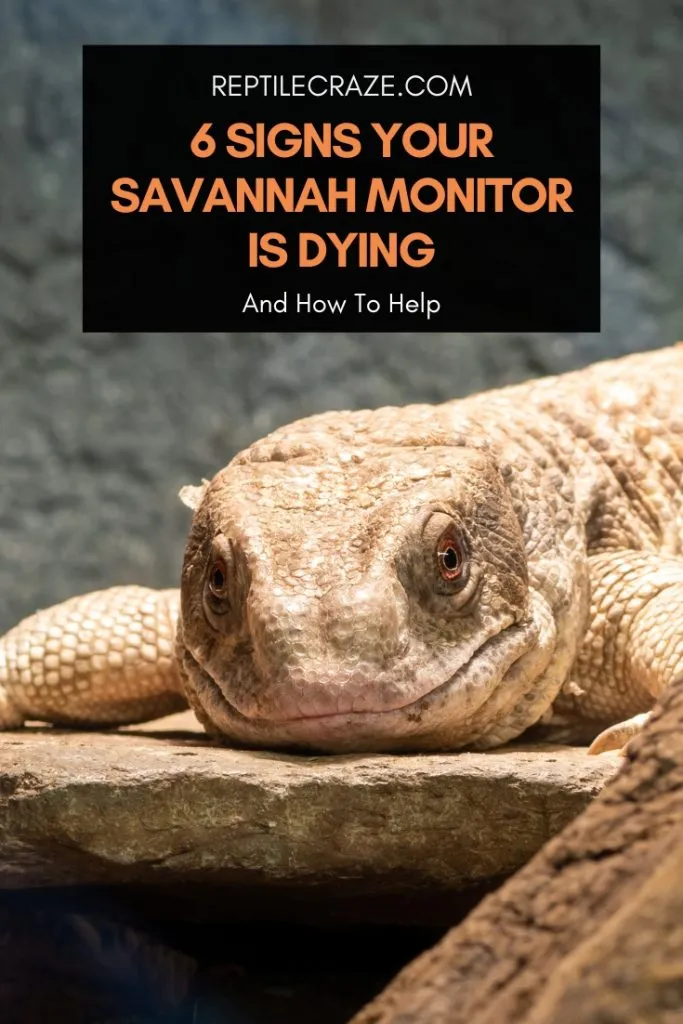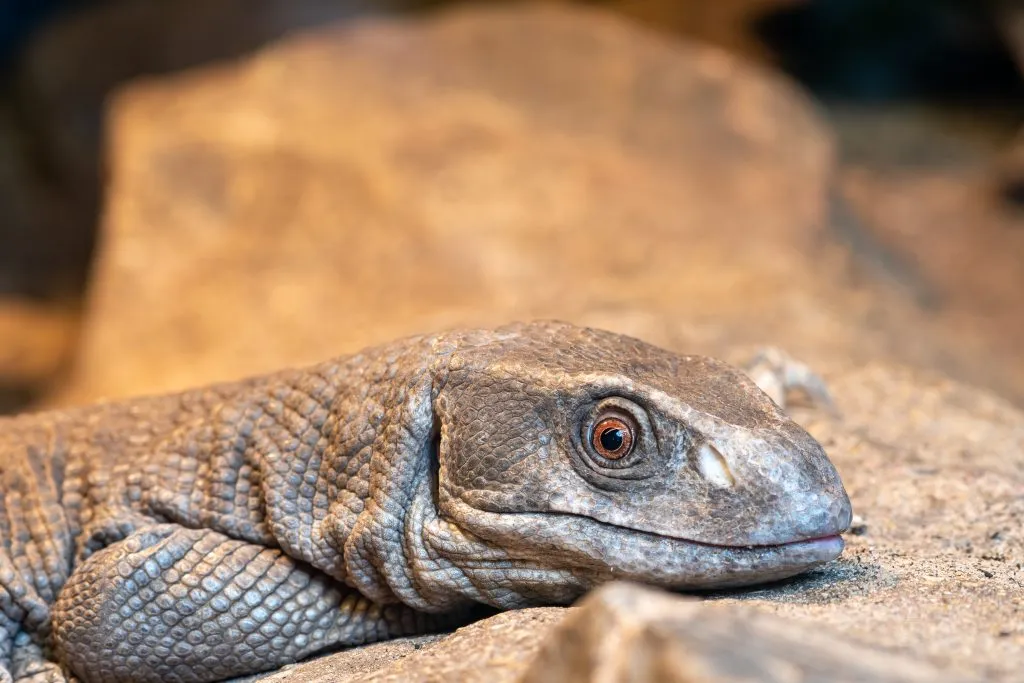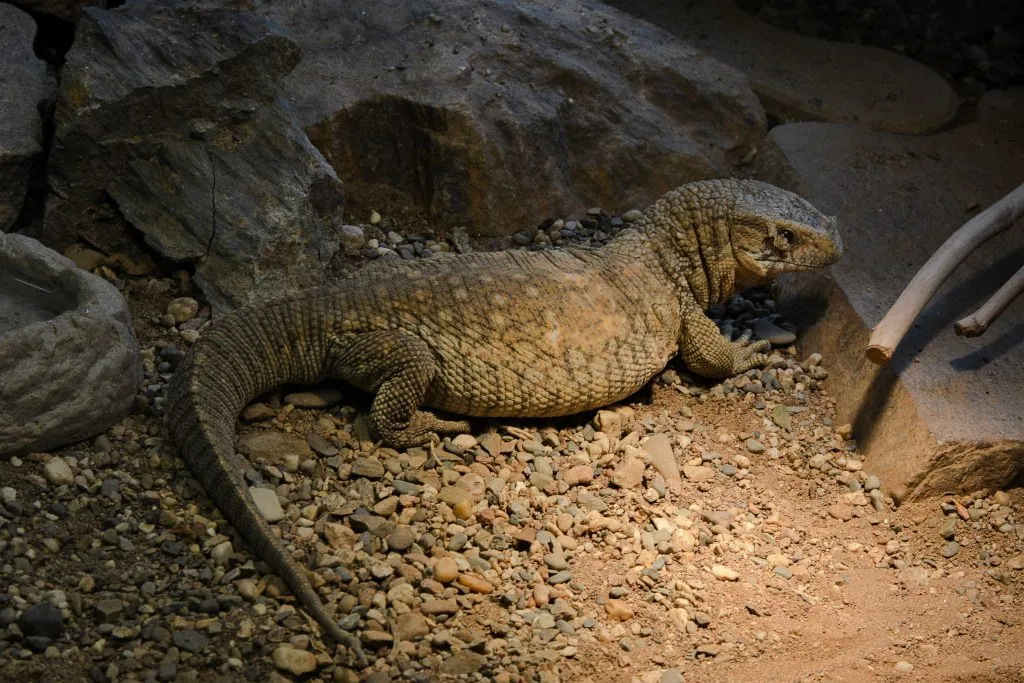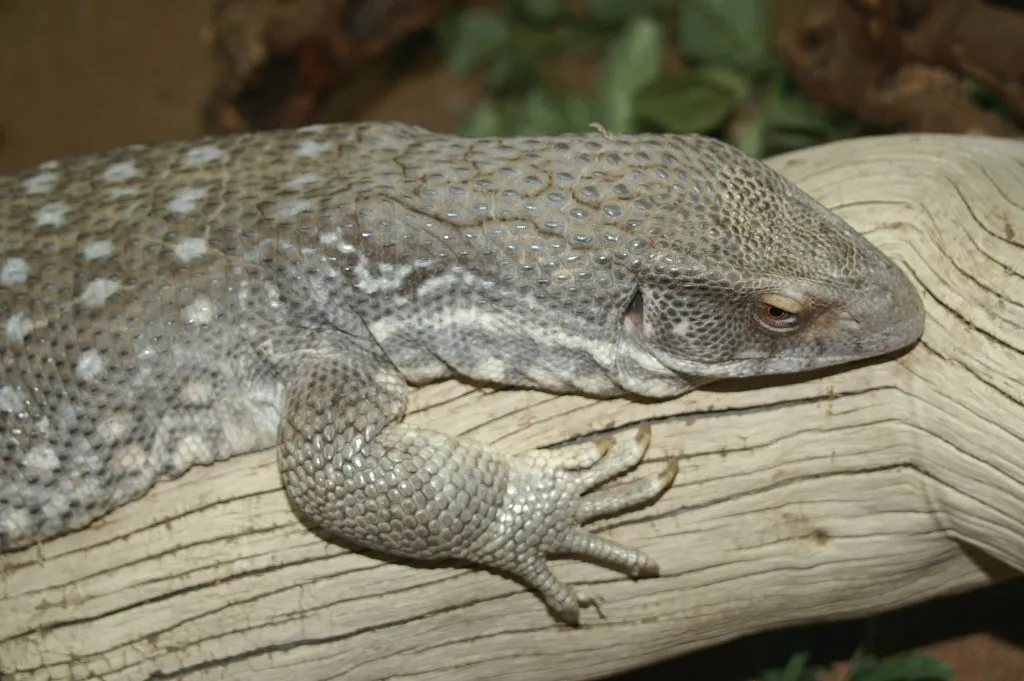
Savannah monitors are one of the monitor lizards that tend to die early even in captivity. The highest mortality is for the first few months of their life, mostly due to poor husbandry, dehydration, and internal parasites. How will you know if your Savannah monitor is dying? What can you do to prevent it?
The signs that your Savannah monitor is dying are; refusal to eat, rapid weight loss, constipation, diarrhea, lethargy, and hiding behavior. It is easy to see if your Savannah monitor is sick or dying as they are active lizards. A change in behavior almost always entails an underlying health issue.
Why do a lot of Savannah monitors die in captivity? What are the things that you can do to prevent your Savannah monitor from getting sick or even dying? In this read, we are going to discuss the signs of a dying Savannah monitor and ways how to prevent them from getting seriously sick.
Table of Contents
Why Do Savannah Monitors Die In Captivity?
According to the study of Dr. Mamadou Cissé, Savannah monitors are seasonal animals. They spend their first three months fasting paired with a complete shutdown of their endocrine system.
They only start using their fat reserves in the latter part of the dry season when their systems start to wake up for more activity. According to Dr. Cissé, this cycle is obligatory and is done by adult Savannah monitors.
However, young Savannah monitors who fail to follow the cycle and try to stay active until the end of the dry season are effectively dehydrating and starving themselves to death.
Seasonal cycles like these are difficult to mimic in captivity. If this cycle is not followed consistently, we are looking at 2-5 years of maximum lifespan for the Savannah monitor.
On the other hand, a lot of adult Savannah monitors die due to obesity. Keep in mind, these are large monitor lizards that need a ton of exercise.
Inexperienced owners tend to give feeders that are high in fat like rodents and chicks, when in fact they are insectivores.
Adding insult to injury, as Savannah monitors can be feisty and difficult to handle, they are not given enough opportunities to exercise outside their enclosures.
This leads to fat degeneration and the eventual failure of their vital organs.
Signs Your Savannah Monitor Is Dying

As mentioned earlier, Savannah monitors are active and curious monitor lizards. Therefore, a sudden change in their active behavior means that they are sick or dying.
Do not let these behaviors go unattended for too long as you may still have time to save your monitor.
1. Refusal To Eat
Savannah monitors love to eat (it may even mistake your toes as
This is the reason why owners almost always leave live feeder insects in the enclosure as it can also be a form of enrichment.
Therefore, if your sav suddenly refuses
It is possible that there is something wrong with the temperature and heating of the enclosure. It is also possible that it is suffering from parasitic infections.
You can take a look at this article to see the reasons why your Savannah monitor is not eating.
This sign may not be serious for other lizards, but it is concerning for savs as they tend to lose weight easily and when they do not have enough fat reserves, this can be bad.
2. Loss Of Weight
This is connected to the previous sign as of course, if your Savannah monitor is not eating, it will lose weight. What is most concerning is a situation where your Savannah monitor is eating but is still losing weight.
This means that its fat reserves are always lacking or not being stored properly which is a huge sign of a serious illness. For most owners, this is a sure sign that their savs will soon die as there is nothing else to be done.
This is the sad case of the owner of two Savannah monitors in the video below. Even if his vet advised him to just up the intake of feeders, his savs just kept having problems even with the right
3. Constipation
Constipation in Savannah monitors is more difficult to deal with compared to other lizards, mostly because of their size. For most owners, a warm soak helps things move along if the backed-up waste is not that serious.
On the other hand, if constipation is caused by other issues like dehydration, parasitism, poor husbandry, prolonged exposure to wrong temperatures, etc., Savannah monitors need to be operated on to remove the clog.
Many veterinarians tried warm soaks, laxatives, and enemas in order to prevent major surgery. However, when these procedures prove to be unsuccessful, it just adds to the stress of Savannah monitors, which leads them to refuse to eat altogether.
Moreover, when surgery is done, complete recovery is a hit or miss. Most savs cannot recover completely and develop other internal issues like sepsis, which also leads to their death.
4. Diarrhea
Diarrhea can be caused by a number of things like wrong feeders, incorrect humidity and temperature, and internal parasites. In most cases, this can be treated by medicines and the adjustment of the conditions of the enclosure.
However, if your Savannah monitor starts having severe diarrhea and excretes a tar-looking poop that may or may not come with blood, it is a huge sign that it is dying. The good news is that this does not happen abruptly.
Therefore, when you spot the first sign of diarrhea, it is best to go to your vet so your sav can have fecal parasite exams. In this way, severe diarrhea can be prevented.
5. Hiding Behavior

It is normal for Savannah monitors to go inside their hides when the temperature drops or during the night as they are diurnal. In fact, young Savannah monitors need 10-12 hours of sleep.
However, adult Savannah monitors are very active and only turn in for the night or have occasional short naps inside the hide. It is highly unusual for them to spend their day in the hide.
This is alarming especially when you try to coax them out of hiding by using
This behavior can be a sign of dehydration, respiratory problems, overheating, and illnesses such as:
- Sepsis due to mite infestation
- Infection due to internal parasites
- Metabolic Bone Disease
6. Lethargy
Lethargy can be caused by obesity, dehydration, lack of
Even when they feel off, they still remain active especially when they are let out of their enclosures to exercise. It is when they are constantly sleeping even during active times that a problem presents itself.
When Savannah monitors are lethargic, they cannot even lift their heads to drag themselves to feed or drink. When they are left unattended like this without medical intervention, sadly, they will not last a week.
Tips To Keep Your Savannah Monitor Healthy

Keeping Savannah monitors as pets is not for the faint of heart. This is also the reason why they are not for beginner reptile owners. They simply have complex needs and they require special care for them to thrive.
Here are some tips to ensure that your Savannah monitor is healthy:
- When there is a slight or sudden change in their behavior, immediately check them and their enclosure to see if there are problems. If there are no visible issues, always consult your vet.
- Only feed them their required feeders. Keep in mind, they are insectivores. Even if they need to store an enormous amount of fat reserves, feeding them fatty
food like rodents, fish, eggs, etc will result in obesity. - Provide them with a large enclosure. Think 100 gallons and above.
- Check the humidity and temperature of their enclosure daily. As much as possible, mimic their seasonal cycle.
- Take your Savannah monitors out of their enclosures for daily exercise. If you found success in handling training, you can also do leash training on them.
- Always check their poop. Normal poop should have a brown part and a white end. If it becomes runny or changes color, immediately consult your vet.
Conclusion
When you have a Savannah monitor, you should always observe their behavior. If an injury or illness is caught early, there is a huge chance to prevent death.
As it is already difficult to keep them as pets, it is essential to keep up with their maintenance schedule. As such, you should be ready to devote a lot of time and effort to their welfare.
- Enchi Ball Python: A Unique and Stunning Morph of Python regius - March 27, 2025
- Emerald Tree Monitor: The Enigmatic Green Guardian of the Rainforest - March 26, 2025
- The Egyptian Cobra (Naja haje): A Fascinating Serpent - March 25, 2025
